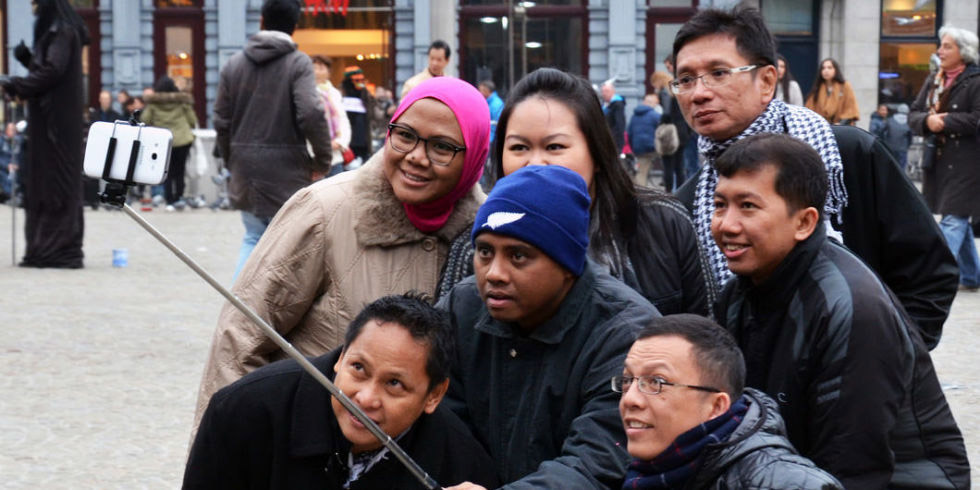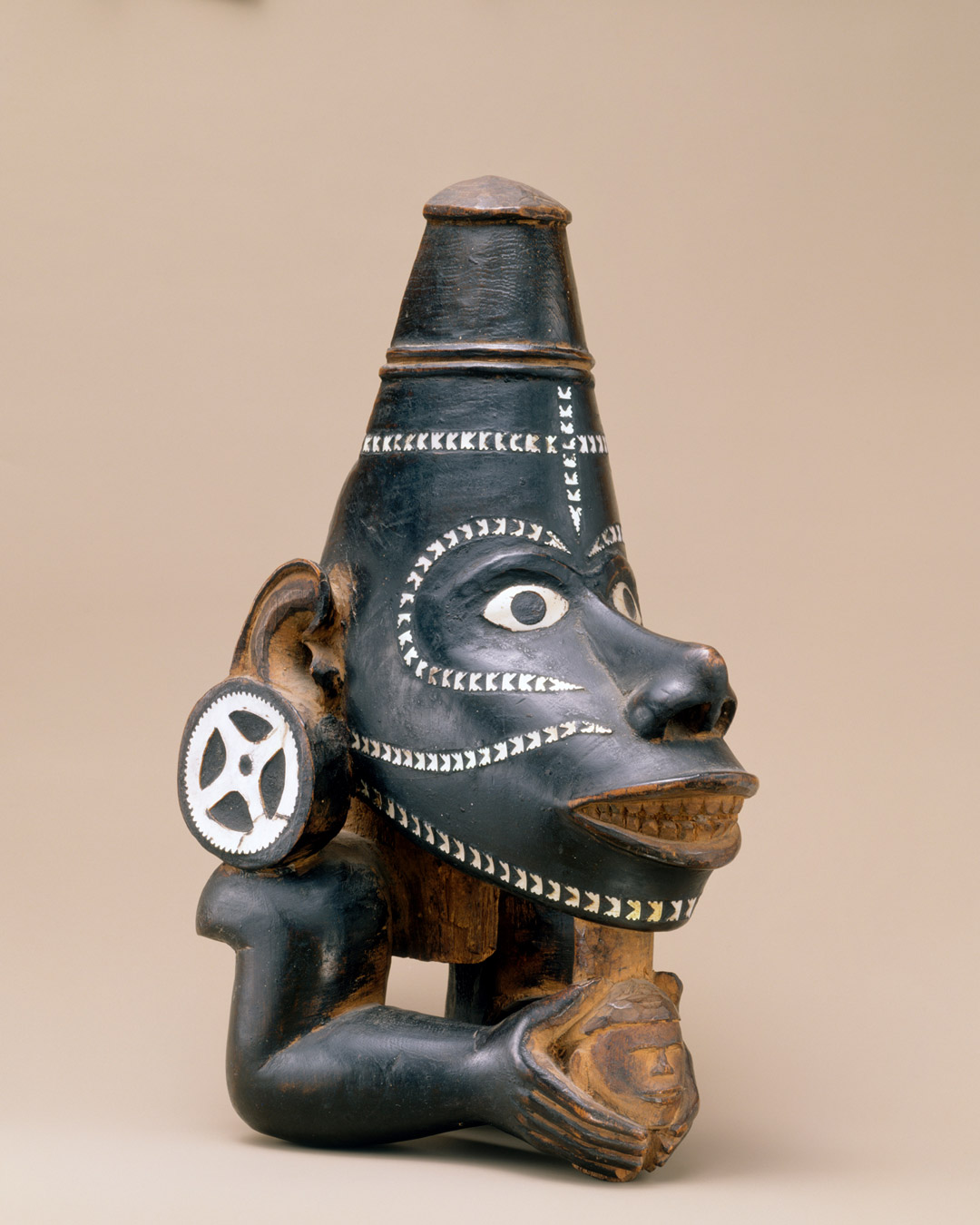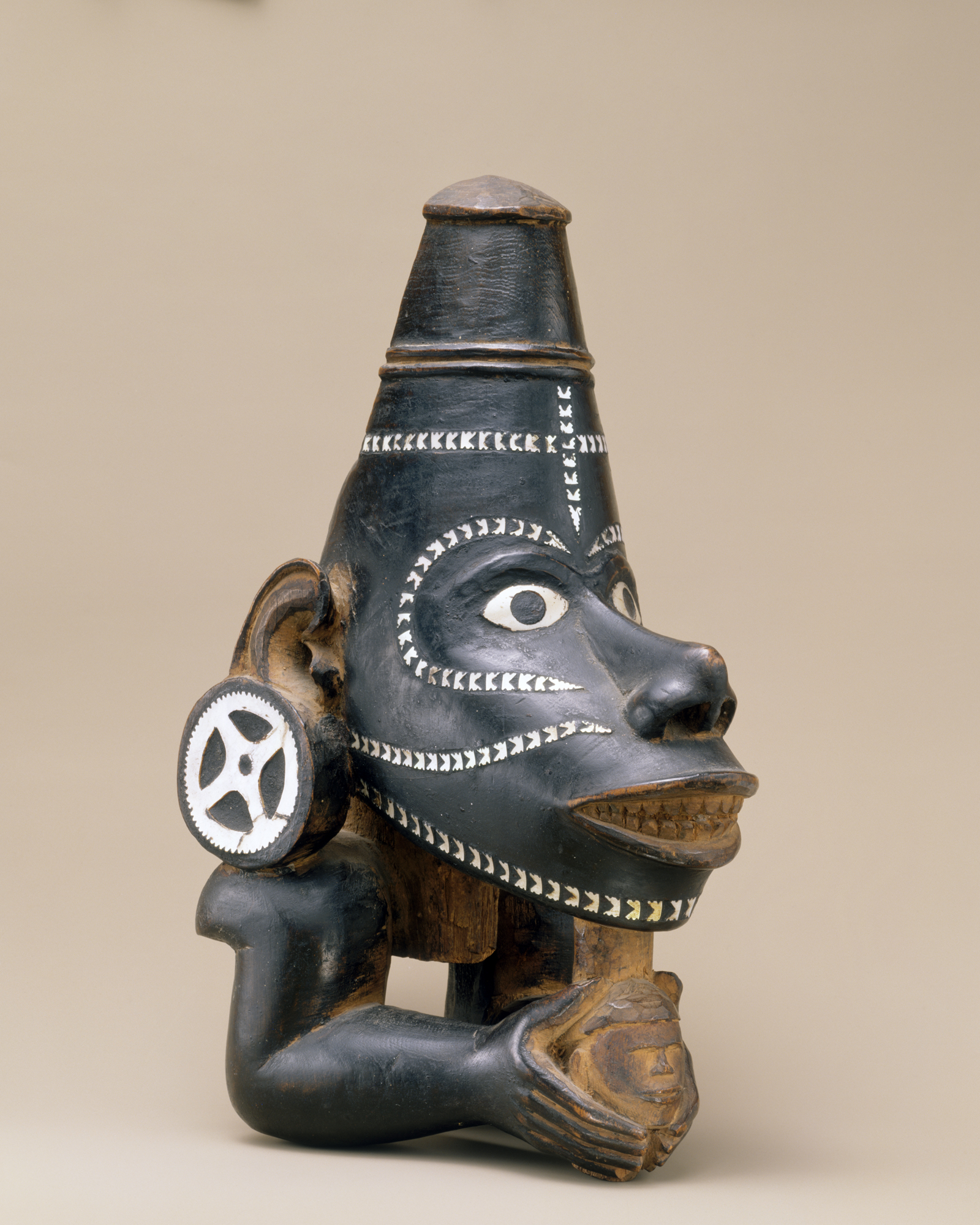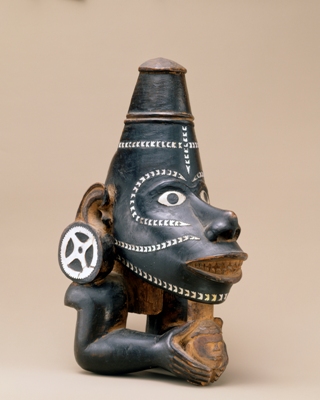Object of the Week: Canoe prow figure
In the Solomon Islands, from whence SAM’s Canoe prow figure (Nguzu Nguzu) comes, canoes provided for transportation, fishing, and warfare. The success of these ventures depended not only on the skill and preparation of the sailors, but on the protection of one of the canoe’s features.
Not simply decoration, the Nguzu Nguzu would act to protect the crew during their voyage. Secured to the ship just at the water line, he would alternately rise above the water and dip down below it, surveying the horizon, and then the depths of the ocean, to detect, and see off, any human or supernatural forces that might come against the ship. Assuring the wind stayed calm and the waves low, he secured safe passage for the ship through his effective presence.
Decorative patterns of abalone shell cross his forehead, encircle his eyes, and line his jaw. In his hands, the Nguzu Nguzu clutches a head. It’s not known whether the head is a friendly one, making this a protective gesture, or if this was an enemy head, and his display one meant to scare off potential threats. No matter; the symbol shows the power Nguzu Nguzu was seen to hold over human life. A sea voyage blessed by his presence was a successful and safe one. Similar examples of Melanesia canoe prow figures at the Metropolitan Museum of Art in New York and the Museum of Fine Arts in Boston give us a sense for the consistency in how these pieces were carved and adorned.
Almost as long as people have been navigating the seas, we’ve decorated our seafaring vessels, and the figurehead, featured prominently at the front of the ship, was one of the earliest forms of maritime artistic expression. As active agents, cultural markers, and symbolic messengers, figureheads have mattered for a long time.
Britannica says the practice likely began millennia ago in ancient Egypt or India. It was picked up by the Greeks and Romans, whose influence has been wide-reaching. In the Middle Ages, Viking longships memorably featured imposing creatures on the prow, whether dragons or sea serpents, like that of the Oseberg ship. The Bayeux tapestry records how English and Normand ships imitated and perpetuated the Viking style. European ship-carving extravagance peaked from the beginning of the 17th to the early 18th centuries, when decoration was so ornate that it would occasionally interfere with ships’ functionality.1 The ill-fated Vasa ship of Swedish king Gustavus Adolphus (1594–1632), boasting a decorative program of some 700 sculptures and decorations, and highlighted by a 10-foot carved lion at the prow, sank on its maiden voyage in Stockholm harbor on August 10, 1628. The years around the turn of the 17th century had seen maritime expansion and exploration, with strong navies developing in England, Holland, and Spain, especially—and their vessels always donned impressive figureheads bespeaking wealth and power.2
Get creative and imagine what figureheads we’ve flown ahead of ourselves in the 20th century . . .

. . . and 21st century . . .

–Jeffrey Carlson, SAM Collections Coordinator
1 Ralph Sessions, The Shipcarvers’ Art: Figureheads and Cigar-store Indians in Nineteenth-Century America, Princeton, N.J.: Princeton University Press, 2005; 15.
2 Sessions, Shipcarvers’ Art, 16.
Images: Canoe prow figure (Nguzu Nguzu), 19th century, Melanesian, Solomon Islands, wood, nautilus shell, 10 5/8 x 7 7/8 x 5 in. Seattle Art Museum, Gift of Katherine White and the Boeing Company, 81.17.1443. Photo: Audrey Kletscher Helbling, https://mnprairieroots.com/2014/08/19/a-photographers-perspective-on-faribault-car-cruise-night/. Photo: Floris Oozterveld / Flickr.


